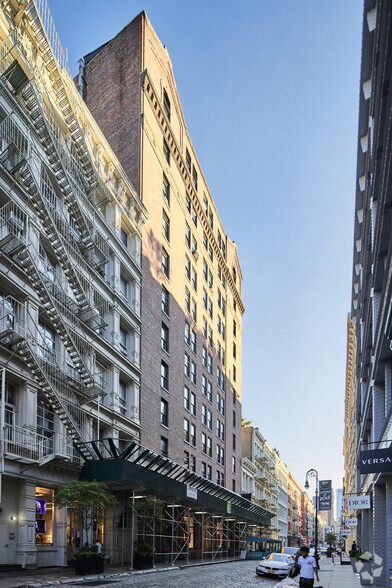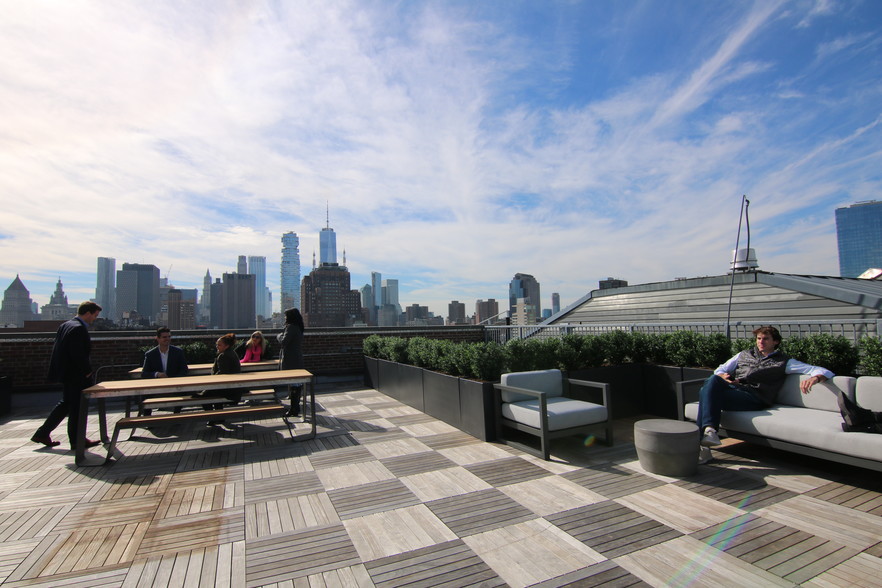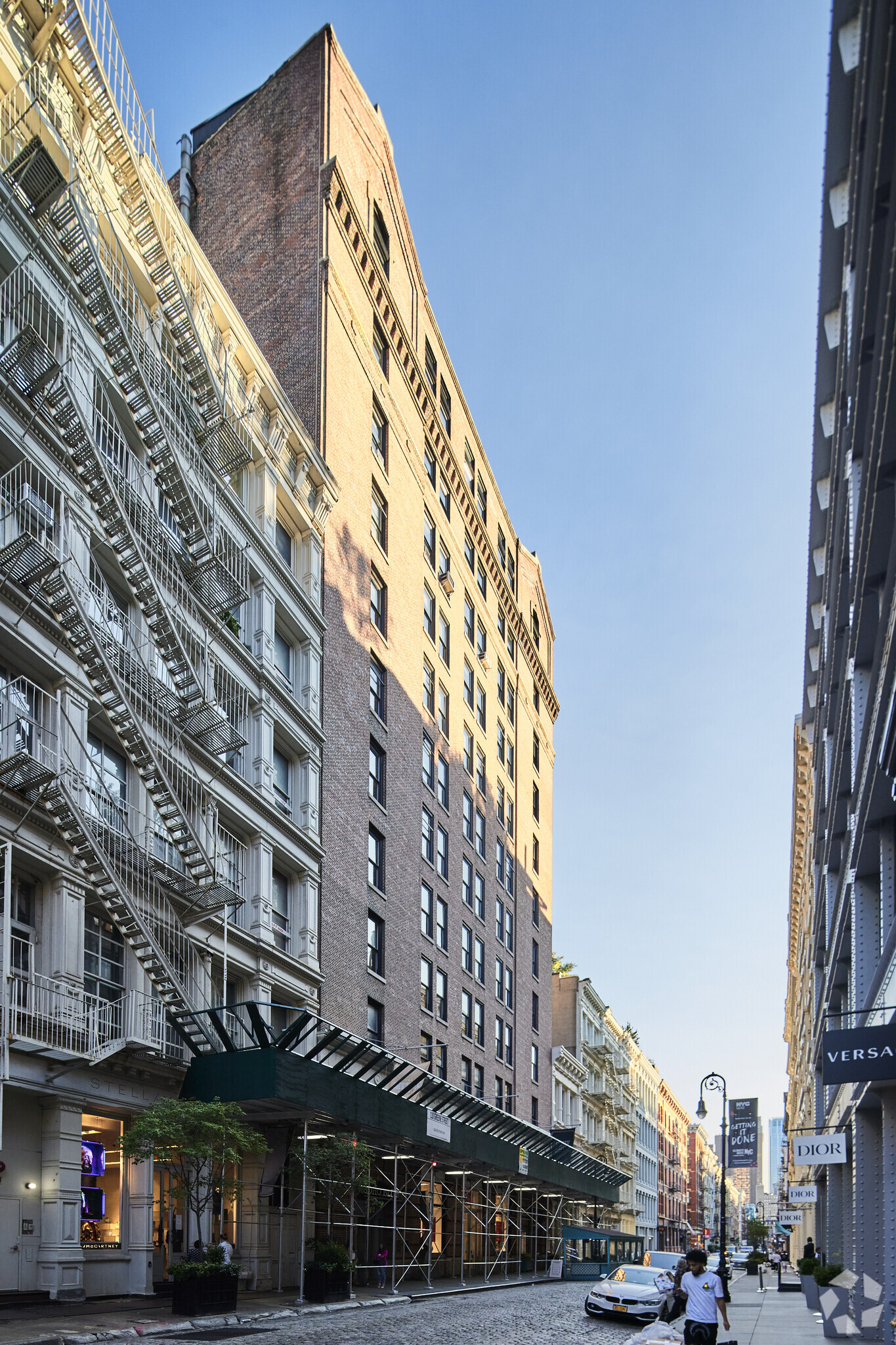
This feature is unavailable at the moment.
We apologize, but the feature you are trying to access is currently unavailable. We are aware of this issue and our team is working hard to resolve the matter.
Please check back in a few minutes. We apologize for the inconvenience.
- LoopNet Team
thank you

Your email has been sent!
104-110 Greene St
New York, NY 10012
The SoHo Building · Office Property for Lease


Property Overview
The SoHo Building, located at 110 Greene Street, is a unique office building, offering commercial space for creative and cutting-edge firms. At the epicenter of SoHo, on Greene Street between Prince and Spring Streets, the building provides its tenants access to the best shopping, restaurants, and nightlife in Manhattan, as well as access to 11 subway lines. A 13-story, 295,000-square-foot, Class A office building, 110 Greene Street has four exposures and frontages on both Greene and Mercer Streets. Built as two structures by Charles “Broadway” Rouse, a noted New York City merchant, the Mercer Street building was completed in 1908 and the Greene Street building in 1920. Years later these two buildings were joined to make up what is now the SoHo Building. A rare early skyscraper in the cast iron district, the SoHo Building offers fantastic views and unparalleled natural light on its upper stories. The building also features high ceilings, open floorplates and historic details throughout. The largest surviving collection of cast iron buildings in the world, the SoHo Cast Iron Historic District was reclaimed from light industrial and warehouse use in the 1950s and 1960s by the artists associated with Pop and Abstract movements in American Art. As galleries moved to Chelsea, chic boutiques, creative industries and stylish hotels moved in, making the neighborhood a draw for locals and international visitors alike. The term “SoHo effect” refers globally to the rejuvenation of a compact older district in or near a city’s center. The SoHo Building itself is not cast iron, but rather a steel-framed skyscraper in a highly modified Colonial Revival style on Greene Street and late Beaux Arts on Mercer Street. The merchant Charles Rouse, who took the middle name of “Broadway” to honor the street where he built his first department store, was an entrepreneur who moved to New York from Virginia after the Civil War, which had bankrupted him. After a stint in debtor’s prison, he made good on his debt by reselling auctioned goods – the E-Bay of its time. His department store was one of the most lavish of the 19th century, selling “everything calculated to make a man fashionable, a lady irresistible and a family comfortable” with goods and fashions coming from as far away as Japan. Surrounded by boutiques that Rouse would no doubt admire, the SoHo Building offers an atmospheric yet practical location for a broad range of creative tenants. Its namesake would be delighted to see that 110 Greene Street still sets the standards for the neighborhood and New York. Winner of the 1986 Arts Commission Award * Fireproof construction * Full sprinkler system * Holmes protection alarm installation for individual units & public access * Uniformed lobby receptionist * Air conditioned lobby * Variety of space sizes * Intercom to each office * Elegant remodeled lobby * Building maintenance staff * Landmark award-winning sidewalk * Completely renovated building * Elevator and one of a kind subway map lighting sidewalk. * Communal roof deck
- 24 Hour Access
- Bus Line
- Concierge
- Conferencing Facility
- Convenience Store
- Metro/Subway
- Property Manager on Site
- Skyway
- Energy Star Labeled
- Roof Terrace
PROPERTY FACTS
Sustainability
Sustainability
ENERGY STAR® Energy Star is a program run by the U.S. Environmental Protection Agency (EPA) and U.S. Department of Energy (DOE) that promotes energy efficiency and provides simple, credible, and unbiased information that consumers and businesses rely on to make well-informed decisions. Thousands of industrial, commercial, utility, state, and local organizations partner with the EPA to deliver cost-saving energy efficiency solutions that protect the climate while improving air quality and protecting public health. The Energy Star score compares a building’s energy performance to similar buildings nationwide and accounts for differences in operating conditions, regional weather data, and other important considerations. Certification is given on an annual basis, so a building must maintain its high performance to be certified year to year. To be eligible for Energy Star certification, a building must earn a score of 75 or higher on EPA’s 1 – 100 scale, indicating that it performs better than at least 75 percent of similar buildings nationwide. This 1 – 100 Energy Star score is based on the actual, measured energy use of a building and is calculated within EPA’s Energy Star Portfolio Manager tool.


